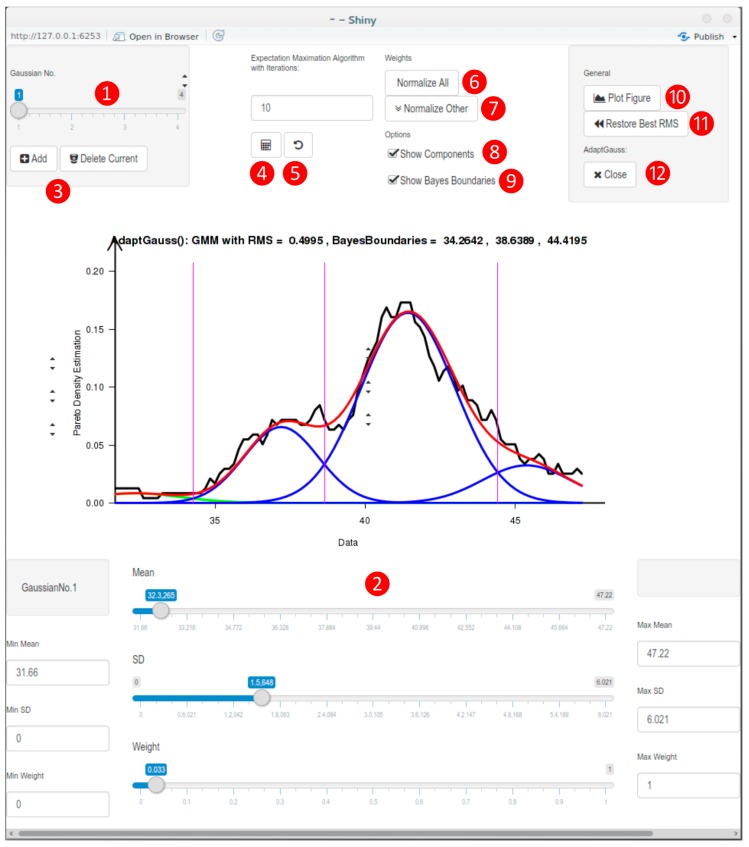Figure 1.
Screenshot of the interface of the AdaptGauss R tool. The following actions can be done by the user: ❶ Select the Gaussian that you intend to edit. The selected Gaussian is shown in green; ❷ Modify the parameters of the selected Gaussian; ❸ Add a new Gaussian or delete the selected one; ❹ Execute expectation maximization (EM) algorithm with displayed number of iterations; ❺ Prior to the execution of the EM algorithm the parameters of the current GMM is saved. Click here to restore these parameters; ❻ Normalize all Gaussians, so that the sum of the weights is equal to 1; ❼ Preserve the weight of the selected Gaussian, but normalize the weights of the other ones; ❽ Single Gaussians will just be shown if selected. GMM is always shown; ❾ Select to show Bayes boundaries; ❿ Plot figure for further processing; ⓫ Restore number of Gaussians and parameters of the GMM with the lowest RMS; ⓬ Close AdaptGauss. If it was started by “results = AdaptGauss(data)”, the variable “results” is now a list that contains the following elements: “Means”, “SDs”, “Weights”, “ParetoRadius”, “RMS”, and “BayesBoundaries”.

